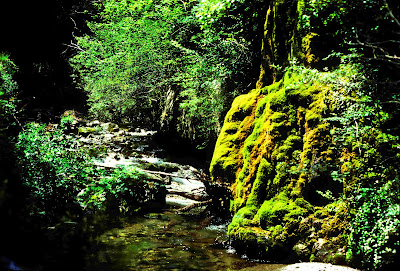After several stopovers in Paris and having done the typical tourist
activities there, it was time for the "grand tour." We began our
journey not in France but in Barcelona, Spain. We wandered through the market
with its fancy, stained glass entrance, enjoying the vibrant atmosphere.
We spent a few days there and then took the train to the southern French city of Perpignan where we rented a car and headed west to the Pyrénées.
The rugged mountains were stunning, with yellow wildflowers in bloom.
While the mountains appeared rocky and inhospitable in places the green pastures and vineyards belied the fact that they were home to many people probably as rugged as the hills themselves.
Our destination was the hilltop fortress of Carcassone. The region around Carcassone has been occupied since 3600 BC. It became an important trading center around 600 BC.The Romans recognized the strategic importance of the hilltop site and they built fortifications there to protect the trade route from the Atlantic to the Mediterranean.
The citadel remained under Roman control until the demise of the Roman empire when it was ceded to the Visigoths. Control of the city changed hands several times during the next 3 centuries or so but came under Frankish rule after the forces of Pepin the Short expelled the Arabs and Berbers in 759. As part of the Frankish realm, Carcassone became a medieval fiefdom and the city and its walls were expanded and Carcassone retained its strategic importance.
Today it is a UNESCO World Heritage Site due to its well preserved structures inside its walls. Walking along the ramparts evokes images of fairy tale princesses in distress and knights in shining armor come to rescue them.
It is truly a fairy tale city.

















No comments:
Post a Comment